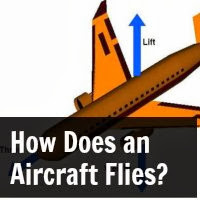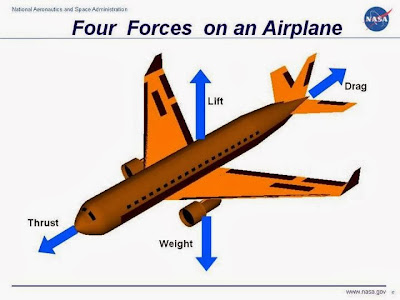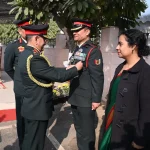Hello IAF and Naval pilot aspirants! In order to be on a safer side in your interview you must have the knowledge about the principle and technique (basics) of the flight of an aircraft, if you have applied for flying branch. Without saying much I’ll directly come to the point, i.e. the principle behind the flight of an aircraft.
The aircraft flies basically following the Bernoulli’s Principle, however there are other things associated as well, which you’ll understand as you read this article further. Here is what this principle means. This principle states that as the velocity of a fluid increases, its pressure decreases. Now when you are asked that how does an aircraft flies and you give “Bernoulli’s Principle” as the answer, it is most likely that the IO will stop you in between and say that I know this tell me something else, hence this would be the incomplete answer. Let us have a look what the correct answer should be.
There are basically a few forces acting on the aircraft which are:
- Lift: It is produced by a lower pressure created on the upper surface of an airplane’s wings compared to the pressure on the wing’s lower surfaces, causing the wing to be LIFTED upward.
- Thrust: It is defined as the forward direction pushing or pulling force developed by aircraft engine
- Drag: It is the force which slows the forward movement of airplane though the air when the aircraft direction is opposite to the direction of the motion of the airplane.
- Gravity: It is a natural phenomenon by which all physical bodies attract each other. It is most commonly experienced as the agent that gives weight to objects with mass and causes them to fall to the ground when dropped.
Now let us know how these forces work:
Forces Acting along the Y-axis: Lift and Weight
Vertical motion of an airplane, and all the associated components of different forces acting along the y-axis, is primarily due to the lift-weight couple. In order to fly, the wings of an aircraft must support the plane’s weight. To do so, these wings generate lift. Let’s see how lift is created:
- Aerospace engineers design the wing of an aircraft in a manner such that the air flowing over it is faster than that flowing under it.
- According to the Bernoulli principle, faster-moving air has a comparatively lower static pressure, than slow-moving air.
- This creates a pressure differential over and under the wing; i.e. a region of low pressure over the wing and a region of high pressure under it.
- The area of low pressure literally sucks-in the wing under it, assisted by the high pressure region pushing the wing upwards.
- This vertical movement of the aircraft is due to the force of Lift.
Forces Acting along the X-axis: Thrust and Drag
Aircraft need to propel forward, in order to cover horizontal distances. This propulsion is also required to attain a certain speed of relative airflow, necessary for the production of lift. Thrust must not be confused with the airspeed of an aircraft. Airspeed is a measure of aircraft motion through the air, while thrust is the force creating that forward motion relative to the remote airflow.
Generated by aircraft engines, thrust is an airplane’s primary driving force. As an airplane speeds through the air, resistance to its forward motion develops. This resistance to the motion of an aircraft, be it vertical motion (lift) or horizontal motion (thrust), is called drag.
Application of Bernoulli’s Principle on an Aircraft
If the air is flowing on the top surface of an aircraft wing is moving faster than the bottom surface then the press on the upper surface of the aircraft wing is less as compared to the pressure on the wing’s lower surface which causes the wing to lifted upwards.
In other words, the wings are designed so that the air flowing over it will have to travel a greater distance faster, resulting in lower pressure area thus lifting the wings.
Upper wing: Airflow is More & Pressure is Less
Lower wing: Airflow is Less & Pressure is More
Also Read
 Tashi Mishra, Editorial Team
Tashi Mishra, Editorial TeamShe is a defense aspirant from Varanasi completed her BCA. She has attended SSB Interview at 1 AFSB Dehradoon and has more SSB coming up. She is confident about joining Defence Forces one day. Here, she is sharing her views and experience. Mail us to join our editorial team now.












